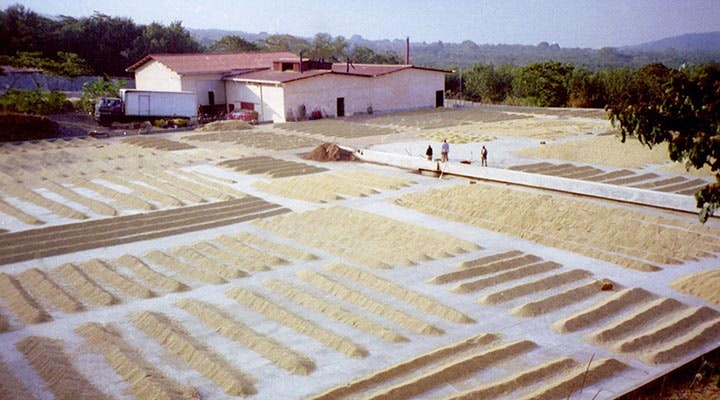Services

Product Development
When the target market has been identified, when competition demands, or when shifts in consumer preferences occur (as has been the case in the coffee industry for the past few decades), it may be necessary to introduce a new product under a new brand name. In some cases, however, product improvement may be a less expensive solution.
There are 2 basic ways to improve any product: Product optimization seeks to improve through small changes in processes. This could include closer adherence to existing standards and specifications (such as oxygen amount in packaging) or establishing tighter standards of production (such as the introduction of tighter timing standards at the roast level). Product redesign requires greater change in either the raw materials used or the production parameters. Songer and Associates can assist in making decisions about product improvement and optimization, including changes in green coffee components or in roast degree.
Determination of Coffee Quality
Cupping services with scores provided from the scoring formats used for Cup of Excellence, Specialty Coffee Association of America, or other scoring formats Determination of coffee quality according to market segment (specialty, usual-good-quality, commercial, etc.) Development of standards of sensory analysis for quality control Freshness issues Once a product is developed, the intended flavor profile must be maintained so that repeat purchases are made by targeted consumers. This can be especially challenging with coffee, since it naturally varies year to year and throughout the year. If the flavor profile has been developed in enough detail, the most important aspects of flavor that a consumer will expect to find can be maintained with reasonable consistency. Besides having the preferred and expected flavors, a large part of quality control is to ensure that defective or poor flavors do not occur. Poor handling at any point in the process, from harvest to roast to packaging, can cause certain types of defective flavors to result. Good quality control programs have in place the following parameters.
Well-defined and achievable specifications A statistically valid sampling plan that accurately reflects the overall quality and size of production Action to be taken if standards are not met A record keeping system of results so that trends and other useful information can be evaluated Songer and Associates can determine necessary specifications and standards or developing a realistic level of testing that will reflect the quality being produced.
Coffee House Specific Services
This is the all-important place where the drink is served to the customer. Having gone through the stages of green bean and roasting, this is the moment of truth. There are 4 aspects to what is being served:
The quality of the coffee and its flavor attributes The quality of the water used in brewing The equipment used in brewing The operator or barista who actually prepares the drink In addition to being the place where drinks are served, the coffee house is also a business, one that must be managed and monitored. Coffee houses attract customers through reputation and location, but to keep those customers consistency in beverage preparation is important. There should be standards for beverage preparation and items on the menu should correspond roughly to what customers expect.
One of the most challenging aspects in a business is when expansion is necessary or the possibility of another location beckons. This makes consistency and management more challenging.
Services offered: Menu development Product development for specific coffee uses (espresso, general blends) Business plan assistance Development expansion parameters (personnel, standards of drink preparation, etc.)
Sensory Services
Training and leading sensory panels Sensory experiment design There are a number of reasons to cup a coffee. One may want to rank the relative quality (using scores, for example), compare one sample to another (difference and similarity testing), or determination of what flavor attributes are present (descriptive analysis).
All sensory tests involve preparation of the product to be tested, qualification of who is doing the testing, and putting the two together under controlled conditions likely to produce the most accurate result.
Songer and Associates has extensive experience in leading and training sensory panels and designing of sensory tests especially for coffee.
Laboratory Design
Sourcing of testing equipment appropriate for coffee Development of lab standards and procedures Most testing done in coffee is sensory analysis rather than instrumental analysis. Proper design of space is important in both instances, however.
Sensory labs must be free of sensory distractions, such as noise or interfering aromas. They should allow uninterrupted concentration and have necessary facilities for sample preparation and cleanup.
Instrumental analyses each have their own parameters. Electrical service of a specific type is often necessary and there must be adequate space for the technicians to prepare samples. Computers for entry of results can be more efficient and most instruments can output results directly into a computer, saving further time.
A laboratory is any space where one wants to make an objective determination or do research. For adequate quality control or product development, one should have a lab that has testing equipment of adequate accuracy and able to handle the amount of testing required. Sensory laboratories have special requirements. Songer wrote a chapter on lab design for the book, Specialty Coffee: Managing Quality edited by Thomas Oberthür. Songer and Associates can assist in laboratory design and choosing appropriate testing equipment.

